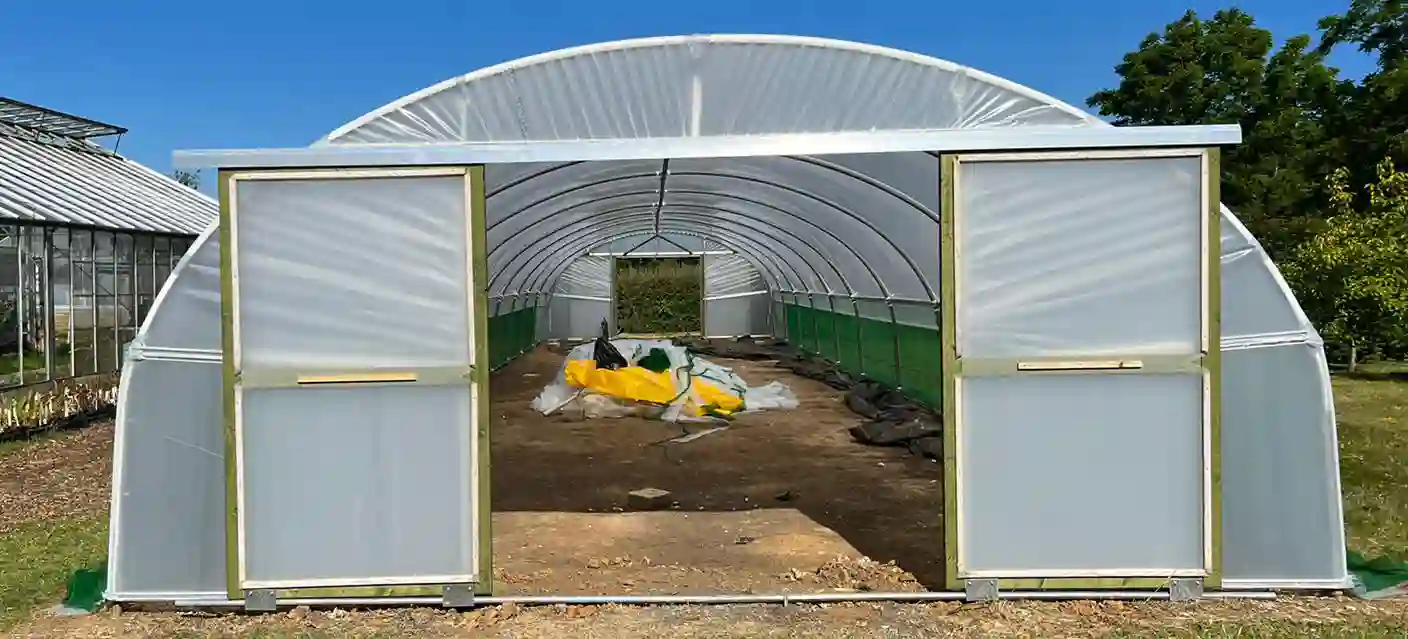
Polythene covers are an essential component of any polytunnel, as the polythene cover provides protection for your plants from the elements. However, it can be difficult to know how much polythene you need to cover your polytunnel frame.
In this blog post, we will discuss some tips and tricks for measuring the right amount of polythene to use for your polytunnel covering.
The first step in measuring the amount of polythene you need is to determine the size of the frame you intend to install. This can be done by measuring the length, width, and height. Once you have the dimensions, you can use a simple calculation to determine the total square footage of the frame. For example, if your polytunnel frame is 10 feet long, 8 feet wide, and 6 feet high, the total square footage would be 480 square feet (10 x 8 x 6).
Next, you will need to consider the type of polythene cover you plan to use. There are two main types of polythene used for polytunnels - clear and opaque. Clear polythene allows sunlight to pass through, which is ideal for growing plants, Opaque polythene on the other hand, is better at blocking sun rays and is ideal for plants that would normally require a little shade, as opaque does not allow sunlight to pass directly through.
Once you have determined the type of polytunnel cover and the square footage required, you can use a roll calculator to determine the exact amount of polythene needed. A roll calculator will take into account the square footage of your frame, the type of polythene you plan to use, and the width of the roll of polythene. It will then give you an estimate of the amount to purchase.
It's important to note that roll calculators are not always accurate, and it's always best to err on the side of caution and order a little extra. This will ensure that you have enough to cover your structure completely, without any gaps or overlaps.
Another important factor to consider is the quality of the polytunnel covering. Not all polyethylene is created equal, and the quality can vary greatly. It is important to choose a high-quality UV-stabilised product, so that it will last for several seasons. UV-stabilized polythene is more expensive, but, well worth the investment as it will last longer and provide better protection for your plants and shrubs.
Finally, it is important to consider the location of your tunnel. If you live in an area that is prone to high winds, you may need to use a thicker and more durable polythene polytunnel cover to ensure that it can withstand the adverse UK weather conditions. Additionally, if you live in an area that is prone to heavy rain, you may need to use a thicker and more durable cover to ensure that it is watertight.
If you are unsure of the exact type of polytunnel cover you require, or would like more information on installing, repairing or building a polytunnel why not contact us here at polytunnelsrus, we would be only to happy to give help and advise on all things polytunnel related